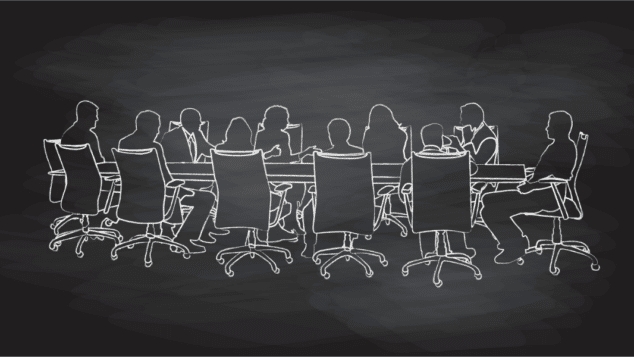The Untouchables: Examining Your Organization’s Sacred Cows

 |
Stephanie Taylor, Senior Director, Education and Academic Radiology, Radiological Society of North America |
 |
Kevin Mayeux, CAE, Chief Executive Officer, National Association of Insurance and Financial Advisors |
 |
Laura M. Downes, Chief executive Officer, Arthroscopy Association of North America |
 |
Lise’ A. Puckorius, Chief Executive Officer, OLC Education & Conference Center |
|
|
Robert T. Rupp, Executive Director, DuPage County Bar Association |
|
|
Greg Dummer, Chief Executive Officer, American Orthopaedic Society for Sports Medicine (AOSSM) |
Every organization has programs/services that have outlived their purpose or their usefulness—the so-called ‘sacred cows.’ Often, staff leaders know these need to end or change long before volunteer leadership realize or agree with this reality. FORUM spoke to a variety of association professionals to ask about the existence of these ‘sacred cows’ in their organizations and if/how you conquer them. These executives faced issues that ranged from several years in the making to several decades of history to an outdated structure more than a century old. Here’s how they handled these types of situations in their organizations.
Has your organization taken on any sacred cows and if so, how did it happen?
Stephanie Taylor shared that the Association of University Radiologists’ longstanding annual awards banquet had decreasing attendance and was not supported by younger members. It took leaders about five years to definitively determine that they needed a new mechanism for award recognition. The decision was survey and data-driven, so while not a significant time investment, she needed data so volunteer leaders could more easily make a decision.
Lise’ A. Puckorius, CEO of the OLC Education and Conference Center told FORUM that while their organization didn’t kill a sacred cow in the traditional sense, they did shift direction to sustain the OLC mission. Part of the original AAOS headquarters building, the OLC Center was designed to train orthopedic surgeons to improve patient care. Their board later designed a state-of-the-art facility in the new AAOS headquarter building. While the primary focus remained on improving patient care, they then expanded the mission: To provide an accessible world-class forum for meetings and education. Working with an outside consulting firm, the board designed the new space. Through that process, they knew they had to be more strategic, using the consulting firm to provide additional insight on what strategic adjustments were needed to be successful. The board embraced the consultants’ suggested changes.
Robert Rupp, executive director of the DuPage County Bar Association, reported that for the first time in 26 years, DCBA would not hold an annual all-day, in person CLE (educational programming) conference. While concern over performance had been discussed for five years, when the time came to decide, the conclusion was made quickly.
Kevin Mayeux, CAE, chief executive officer with the National Association of Insurance and Financial Advisors, shared that they had slain “probably the most sacred one of them all—our bottom-up structure with approximately 550 independent local associations, 50 independent state associations, and the national association which was controlled by voting delegates from these state and local groups. This tremendous effort took more than two years, but the membership bought into a new, nimble structure that is poised to address the needs of today’s members and take us into our next 100 years ready to tackle the problems and issues that lie ahead.”
How did your organization’s leadership tackle this decision?
Each organization actively built cases to aid volunteers’ decisions. Taylor used a mixture of attendance data, membership survey feedback, ROI and an invested leader to own the decision in convincing leaders to stop holding their annual banquet. Puckorius leads staff efforts to provide a strategic business plan for any decisions brought to the board which includes the ROI. The organization measures ROI on the long-term impact for the member organizations represented at the table and the impact on patient care.
Rupp said DCBA’s board made the ultimate decision, after reviewing the need for the event in light of the mounting annual loss from delivering it. NAIFA’s Mayeux formed a strategic planning group that met over several months. “The task force, representing a broad cross-section of our federation leadership, had some frank conversations and was willing to lay everything on the line in order to better ensure long-term success,” said Rupp. “We then had a half dozen webinar ‘town hall’ meetings and several public comment periods before finalizing the plan.”
How often does your organization review ‘sacred cows’ for relevancy?
Many organizations commonly only review these programs when there’s been a shift, such as an attendance or financial drop. Others incorporate ROI as part of the budget process or the staff team brings the program to the attention of volunteer leaders at least annually. Uniquely, the National Association of Insurance and Financial Advisors approaches it as a regular course of business, slating a strategic conversation at each board meeting, setting aside one meeting a year for a deeper strategic dive.
“All our products and services are evaluated regularly, sometimes annually as part of the budget development cycle or as post-analyses and sometimes on an ongoing basis from day—today, week-to-week or month-to-month,” said Greg Dummer, CEO for the American Orthopaedic Society for Sports Medicine (AOSSM) “Metrics are established in advance and used to quantify our performance. These metrics may include financial objectives; participation goals, such as memberships, online traffic or event registrations; and member and market survey ratings. We compare available data with expectations, past performance and competitive factors, but numbers alone do not always paint an accurate picture.”
How did you present your case and what tools/resources/strategies did you use?
These association professionals used various methods to present their cases for change. They also faced different decision-making horizons ranging from an hour to years, depending on the organization and how they routinely conduct business.
Puckorius shared that “[The OLC board] used an outside consulting firm to look at the business model and their review of day to day operations led them to recommend the addition of a CEO focused on growing the business and improving day to day operations. The previous facility was managed by an orthopedic nurse who had extensive knowledge of what was needed in a bio-skills lab versus an educational conference center.” OLC’s board bases decisions on the impact on both patient care and the facility, not hesitating to move ahead strategically.
DCBA’s Robert Rupp explained, “The simple demonstration of fiscal loss year over year was clear and easy to explain. The successful two-year shift toward different delivery mechanisms for CLE programs and the growth in the number of those programs throughout the year also provided good comfort that member needs were being met in other ways.” DCBA leaders were concerned for at least five years before the ‘unspoken’ was finally said. After leaders heard, “We don’t need this anymore,” the decision was made in an hour.
To ensure success, Mayeux and NAIFA used a broader approach, taking two years of discussion and promoting the idea across 550 local and 50 state associations to effect change.
Dummer shared that, at AOSSM, they take a long-term view that requires understanding Return on Objective (ROO) goals as well as Return on Investment (ROI) goals. “Our mission is education, and with respect to this mission, we sometimes have rational reasons to support financial loss-leaders,” he adds. When we decide to sunset or significantly re-engineer a program, factors for consideration include program attractiveness, alternative options and competitive position. Metrics typically help us justify our decisions, but bigger picture goals and aspirations always inform the process.”
What constitutes a ‘sacred cow’ for your organization?
With variations on a theme—not being able to change something within their organizations—each professional explained the nuance for their association:
- Taylor: A sacred cow is something so ingrained in an organization that the thought of changing or eliminating it is taboo.
- Rupp: Something that occurs year after year, often instituted by an honored past leader, almost unquestioned and without significant deliberation on need or return.
- Mayeux: Something that many view as a traditional program that we can’t do without. We have come to realize that any program has a life cycle, and they need to be refreshed, retired or reengineered in order to remain relevant in our changing world.
- Puckorius shared that OLC does not have traditional sacred cows as it has neither membership nor enduring materials. “The mission stems around managing the physical plant as well as the execution of all the meetings and educational events for those outside of orthopaedic.” While OLC’s board was previously very involved in day-to-day operations, they are now committed to supporting the staff’s management of daily operations while they focus on strategic relationships to further the organization’s mission.
How did you build and present your case?
While Taylor leveraged a future leader to build the case, she presented it as the organization’s executive. Puckorius used the outside consultants OLC engaged as they were knowledgeable about orthopedic specialty societies. Volunteer leaders therefore valued their input and recommendations.
Rupp used the DCBA Board of Directors and CLE Committee. He expanded, “Member involvement in the program had fallen so far, a general outreach to membership was not pursued. I made the pitch and our current president was brave enough to make the jump on his watch without standing in the way.”
At NAIFA, Mayeux used a broad cross-section of leadership—national, state and local volunteer leaders, as well as national, state and local staff. They focused on diversity in terms of age, gender and racial/ethnic background to ensure member interests were best represented. “Always let the volunteers lead and be the public face,” he recommends. “As CEO, I re-emphasized their message in a different way through publications, blog posts, social media and main stage presentations—and did so in terms of change being a requirement and having a bold vision for the future.”
Did your organization ultimately ‘kill’ the program, or has it evolved into something new?
While only the Association of University Radiologists actually stopped their traditional banquet, most other organizations evolved into something new. OLC’s business model evolved, accomplishing their goal of being a more strategically-led organization. DCBA reviewed what they were routinely doing, allowing them to acknowledge the shrinking time all stakeholders in the educational programming process have to devote to planning, hosting and attending such activities. As a result, they changed their approach, now offering short in-person and online programs throughout the year. NAIFA evolved an outdated, historical structure to better reflect changing dynamics and their current members.
Any tips for other association execs facing such a challenge?
Taylor: It is important to challenge the sacred cows from a strategic or business perspective and find champions in the elected leadership. It is also important to understand why they are sacred cows. I wish our organization used a matrix map exercise to assess and determine priorities.
Puckorius: You need to stay focused on the mission of your organization. It is the association executive’s responsibility to manage the business of the organization so that the mission moves forward. The executive is also responsible for guiding the volunteers through tough times. It is imperative to remember that the leaders are volunteers. An organization success depends on strong leaders in both the staff positions and the volunteer leader role. A pipeline of passionate strong volunteers driven by the mission of the organization is essential. I do strongly recommend that every paid staff leader should network with their peers to assist with those challenging issues! Networking is key!
Rupp: Work with your elected leadership to calm their fears that eliminating a sacred cow will somehow mar their legacy. Some noses will always be out of joint, but leaving a healthier organization providing a better service is a far greater legacy than kicking the decision-making can down the road for his or her successor.
Mayeux: It takes time, patience and tenacity. Work in collaboration with your volunteers. Let them be the face and voice of the change and be there to back them up.
Tags
Related Articles
Great Bosses, Greater Impact: Leadership Lessons that Stick
The best bosses leave more than instructions—they leave echoes of confidence, creativity, and leadership that...
4 Key Strengths of an Association’s Board
A 2023 study asked association leaders which strengths are vital to a board. Read what...
CEO Perspectives on Association Forum’s Governance Professional Practice Statments
Association Forum members have access to professional practice statements. A committee reviews these statements annually....






